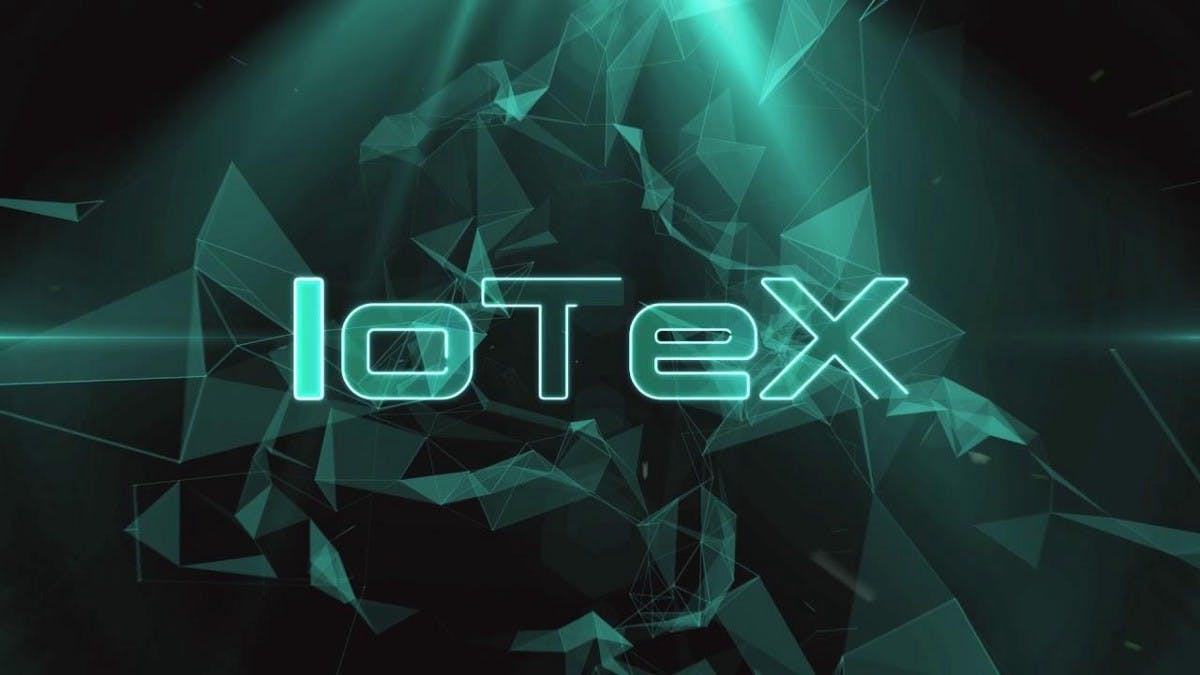
- All
- Tools
- Analytics
- Technical Analysis
- Trading
- Blockchain
- DeFi
- Guides
- Company News
- Educational
- Opinion
- Price Predictions
- Market News
- News
- Trading cases
- Practical guides
- Exchanges
- Trading signals
- Cryptocurrency
- Crypto bots
- Other
Become a crypto master
Learn everything about crypto,
trading and bots

Will supercomputers kill PoW mining?
Explore the evolution of Proof-of-Work mining in 2025, from hardware innovations and energy efficiency to the integration of AI trading bots and supercomputing, and how these changes are shaping the cryptocurrency landscape.
Start Trading on 3Commas Today
Get full access to all 3Commas trading tools with free trial period

Over the past several years, there has been a fierce debate about the future of cryptocurrency mining. Many of those who entered the crypto industry long ago have concerns that Bitcoin could be in serious trouble due to the vulnerability of its consensus mechanism. In this article, we’ll have a closer look at what threatens Proof-of-Work (PoW) coins in general and Bitcoin in particular.
Where does this fear stem from? Many believe that supercomputers and new quantum technologies could eventually crack PoW, and ultimately threaten Bitcoin. But this isn’t PoW’s only problem, as other issues like the semiconductor crisis and environmental impact loom large as well.
Supercomputers versus ASICs: performance and hashrate peculiarities
To reach a deeper understanding of the threat of supercomputers, we first need to understand what they are. Supercomputers are universal computing machines with exponentially larger technical capabilities and performance than all the existing computers in the world combined. As a rule, to create a supercomputer, developers combine a large number of powerful servers into a high-performance network. The main difference is that ordinary computers can solve problems sequentially, while a supercomputer can simultaneously perform many calculations.
As mentioned above, many argue that supercomputers can destroy ASIC mining. This is because of their ability to perform instantaneous calculations. This, in turn, would ruin PoW mining and jeopardize the security of the Bitcoin network.
Recall that the essence of this principle of cryptocurrency mining is that a user’s hardware performs complex computational operations to solve certain mathematical problems. As a reward, miners receive a certain amount of cryptocurrency. These calculations often require specialized equipment – application-specific integrated circuits (ASIC), that allow performing a massive number of calculations at high speeds, making them an effective way to mine cryptocurrencies.
It’s also important to remember that some PoW blockchain networks don’t use ASIC mining equipment, and instead utilize more traditional and less expensive GPUs. There are also other blockchains that don’t utilize PoW at all, and opt for other consensus mechanisms like proof-of-stake (PoS). While these blockchain networks are important, we will be examining the risk of quantum computing as it relates to ASIC-mined blockchain networks.
Hashrate
The speed at which an ASIC performs calculations determines each miner’s hashrate. The aggregate of all the devices that participate in the mining process determines the overall network hashrate. Miners depend on their hashrate to maintain profitability. The more miners there are in the network, the more power is needed for an individual miner to succeed because the tasks become more and more complex.
The main concern in mining is that supercomputers can be used to bring the profitability of ASIC mining to zero. The theory is that one day the most powerful computer will be able to perform the necessary calculations and find solutions faster than all the mining farms in the world combined. This would give a supercomputer complete control over all transactions in the Bitcoin network. However, such a supercomputer does not yet exist.
Cryptocurrency miners are always concentrating on increasing their hashrate performance. There are a few ways this can be done effectively. One is to replace mining equipment with a newer and more powerful hardware, and the other is to improve the conditions in which the equipment functions.
Over the years miners have experimented with overclocking their ASIC devices. This approach allows the ASIC to consume more power and increase its hashing power as a result. However, this is a hazardous approach and can cause ASICs to overheat and ultimately lead to failure . ASIC developers themselves disapprove of such practices, and the user risks losing the warranty in case the equipment fails.
The biggest problem that affects the performance of ASIC miners is overheating. Therefore, choosing the right cooling system can be paramount in increasing the performance of ASIC miners. At the moment, the ideal and most effective option is immersion baths, which not only affect the hardware’s temperature but also increase the ASIC’s lifespan. The mining equipment is immersed in a special liquid, which takes away excessive heat, thereby reducing power consumption, increasing the efficiency and computing speed, raising the lifespan of the equipment, making mining safer.
Evolution of supercomputers
Let’s briefly discuss the history of supercomputers. Back in 1960, the first supercomputer, called the Livermore Atomic Research Computer, was built. It was designed for computational activities and placed in the U.S. Naval Research and Development Center. However, many believe that the real supercomputer was not demonstrated to the public until 1964 when Control Data Corporation released the CDC 6600 supercomputer.
Seymour Cray, who is considered to be the father of supercomputers, led the project. That model had a fantastic performance for its time, 1 megaflop. It remained the best-performing computational machine for five years until the same team rolled out the CDC 7600 model, which was ten times faster than its predecessor.
For more than 50 years, supercomputers have evolved in ways unimaginable to ordinary people. According to the Top500 list, the Japanese Fugaku model is considered the best-performing supercomputer at this time. This innovative unit is based at the Institute of Physical and Chemical Research in the Japanese city of Kobe.
Fugaku was the first supercomputer capable of delivering more than one exaflops of performance. By now, it has undergone a series of refinements and is capable of showcasing mixed performance levels of up to 2 exaflops. The unit holds 158,976 processors manufactured by Fujitsu A64FX with a total of 7,630,848 cores, reaching a total power of up to 442 petaflops – a world record. Japanese innovation has seriously outperformed all its competitors. Fugaku’s performance is far beyond the aggregate performance of other supercomputers included in the Top500 list.
Moore’s Law
When talking about computers – and especially supercomputers – it’s essential to mention Moore’s Law. In a nutshell, Moore’s Law implies that every 24 months, the number of transistors in a dense integrated circuit and, therefore, the computing power of new machines, doubles. This law was derived from the observations of one of the founders of Intel, Gordon Moore. He observed that the number of transistors on each chip increases due to gains from the experience of production, while the price of production itself decreases.
People argue that this cannot continue forever because sooner or later it will be physically impossible to shrink a transistor any further. The moment its size reaches a few atoms, we will face quantum interactions, which will make the prediction of electron motion unrealistic. Experts suggest that Moore’s Law will reach its limit by 2025, but the supercomputers’ destiny is still uncertain. While some experts suggest the next wave of innovation will be in molecular and quantum transistors, this is still no more than a theory.
Quantum uncertainty of PoW mining
In recent years there have been rumors that Bitcoin is under threat from Google as it is coming closer to introducing innovative processors and achieving quantum superiority.
A number of experts in the cryptocurrency world believe that developments in quantum computing will kill the entire concept of PoW mining as we know it. This opinion is not mere speculation – it is based on the study of the potential quantum threat. An analysis of Bitcoin and other blockchain protocols has shown that they are extremely vulnerable to quantum computers. A number of scientists are working to find solutions and options for implementing quantum computing, generating speculation that quantum computing power could be a real threat to cryptocurrencies. In the not too distant future, Bitcoin users’ wallets theoretically could be hacked by supercomputers which should be able to crack 64-digit private keys.
However, Vladimir Gisin, who has been an associate professor at the Financial University under the Russian government, believes that Bitcoin’s blockchain will be in real danger only after quantum computers with 100 qubits are invented. Recall that Google claims to have developed a 49-qubit machine, but there is no real proof to this yet. The solutions we have now are able to solve only a very limited number of specialized tasks, and, most likely, the process of preparation and adaptation for hacking cryptocurrencies will take more than a decade.
Another well-known expert in quantum physics, Gavin Brennan, who holds a position at Mukkuor University in Australia, is sure that given the current capabilities of quantum computers, unpleasant scenarios are likely to play out for Bitcoin and other cryptocurrencies in the foreseeable future. Yet, the expert believes that today’s quantum infrastructure does not have sufficient computing power to break cryptographic keys.
Developers of blockchain technologies, in turn, are seriously puzzled by the threat posed by quantum processors, and many creators are already actively engaged in developing various methods of post-quantum cryptography designed to protect blockchains from quantum attacks.
Experts in this field are convinced that those methods of post-quantum cryptography, which are available now and will be finalized in the coming years, will manage to protect blockchain technology at least for the next half-century.
On the one hand, we see the active development of quantum technologies, and on the other hand, the development of new cryptographic methods. With advancements on both sides, it may be premature to say that quantum computers will make blockchain protocols obsolete and vulnerable. Rather, we will likely witness an increased technology battle between the two sides in which the outcome cannot yet be predicted. Therefore, we can conclude that quantum computers are not a threat to cryptocurrencies in the near future. The perceived risks of quantum processors hacking distributed ledgers is more theoretical than real.Yet, this is an area that crypto enthusiasts should pay attention to in the future, as technology can change at any moment.
Real threats to PoW mining
There are two other large threats to cryptocurrency mining that are more imminent than quantum computing: the shortage of semiconductors and the environmental issues highlighted by numerous media sources and influencers.
The semiconductor shortage is already causing significant problems for miners. Chip producers have reported that the rate of production is falling sharply. At the moment, the major players on the market are faced with a shortage of chips and textolite necessary for building semiconductors. Prices of components have risen sharply, there is a shortage of video cards in stores, and delivery dates are constantly being postponed.
The problem is that the growth in demand for semiconductors far exceeds the available supply. Nowadays, semiconductors are used in almost every key area of our lives. On top of that, COVID-19 caused many factories worldwide to shut down, affecting production and delivery times. In addition, the last year was marked by an increase in cryptocurrency prices, which means an increased demand among miners.
These factors highlight that cryptocurrency miners could have to slow down in the near future because the performance of old equipment will drop, and new equipment will either not reach the market in a timely manner, or will cost a fortune to implement.
Another major problem revolves around the environmental impact of PoW mining. The ever-growing interest in cryptocurrency mining increases computing power, and therefore electricity consumption, which harms the global environment. Many point out that mining utilizes non-renewable energy, which seriously affects pollution and climate change. As time passes, crypto mining continues to grow in electricity consumption along with growing user adoption. Additionally, as more blockchain networks and cryptocurrencies are created, this adds to the energy consumption problem.
Many mining farms are located in regions that utilize coal-powered electricity. This means, Bitcoin miners use this energy to power their hardware, creating a greenhouse effect and threatening the Earth’s climate. As of March 2021, Bitcoin’s carbon footprint was on par to that of Slovakia. According to one study released a couple of years ago, the rate of growth in Bitcoin mining energy consumption could cause its carbon footprint to raise the Earth’s average temperature by at least 2 degrees Celsius over the next 30 years.
The environmental problems associated with mining Bitcoin and other cryptocurrencies negatively impact the mass adoption of the PoW protocols. Nevertheless, miners are increasingly using renewable energy sources, which in turn pushes further development of green energy solutions. Additionally, mass media has portrayed Bitcoin and other PoW blockchain networks as energy guzzlers without truly comparing their environmental impact to that of fiat currency, which is in many ways worse. Still, the best bet for miners to convince the world that their work is not harming the planet is through renewable energy.
Conclusion
Supercomputers could potentially influence Proof of Work (PoW) mining dynamics, but it's unlikely they would completely eliminate it. Here's a breakdown:
- Computational Power:
undefinedundefined - Centralization Risks:
undefinedundefined - Cost Factors:
undefinedundefined - Adaptive Algorithms:
undefined - Transition to Proof of Stake (PoS):
undefined - Technological Innovation:
undefined - Regulatory Environment:
undefined
In summary, while supercomputers possess the potential to significantly impact PoW mining, a combination of economic, technological, and regulatory factors will likely continue to shape the mining landscape.
The Evolving Landscape of Proof-of-Work Mining in 2025
As of 2025, the Proof-of-Work (PoW) mining ecosystem has undergone significant changes driven by advancements in hardware, increasing regulatory oversight, and the rise of integrated AI technologies. These shifts are influencing not only miners but also developers and asset managers using tools like automated crypto trading bots to stay competitive in the market.
Diversification Beyond Bitcoin
While Bitcoin continues to dominate the PoW sector, altcoin trading bot users have shown renewed interest in mining other coins like Kaspa, Ravencoin, and Ethereum Classic. These cryptocurrencies support different hashing algorithms and resist ASIC centralization, making them viable for GPU-based mining and automated crypto strategies alike. For AI bot crypto traders, these alternatives offer new opportunities for strategy diversification.
Hardware Innovation and Automation
The release of cutting-edge ASIC miners—such as Bitmain’s S21e XP Hyd—and GPU advancements like the NVIDIA H100 are reshaping the performance benchmarks of modern mining setups. These technologies are now being paired with crypto trading bot software that supports dynamic portfolio allocation based on real-time mining profitability data. For users running ai bot trading crypto setups, this convergence allows mining operations to be dynamically optimized within larger automated portfolios.
Energy Efficiency and Regulation
Sustainability is now central to mining operations. Facilities are increasingly turning to renewable energy sources and applying AI for crypto trading efficiency analysis. The rise of automated crypto trading platforms has helped traders align their mining inputs with broader ESG goals, using data from both mining and market activity to adjust positions via auto trading bots.
Supercomputing Meets AI Trading Bots
Perhaps the most transformative development is the repurposing of mining infrastructure for AI applications. High-performance GPUs and FPGAs, once used strictly for mining, are now powering crypto ai trading bots and signal prediction bots that drive high-frequency strategies. Some auto crypto trading bot users are deploying these supercomputing assets to simultaneously mine and train trading models on real-time market data.
Conclusion
Proof-of-Work mining in 2025 is no longer just about hashing power—it's about interoperability, adaptability, and strategic alignment. As the boundaries between mining, AI-based crypto trading bots, and automated portfolio management blur, professional traders and institutional investors are leveraging tools like ai crypto bots and auto trading crypto software to gain an edge in increasingly data-driven environments.
3Commas, as a software provider, continues to support this evolving ecosystem by offering sophisticated automation tools, including ai trading bot crypto integrations and signal-based execution capabilities.

A proven leader, successful at establishing operational excellence and building high-performance teams with a sharp focus on value creation and customer success.





